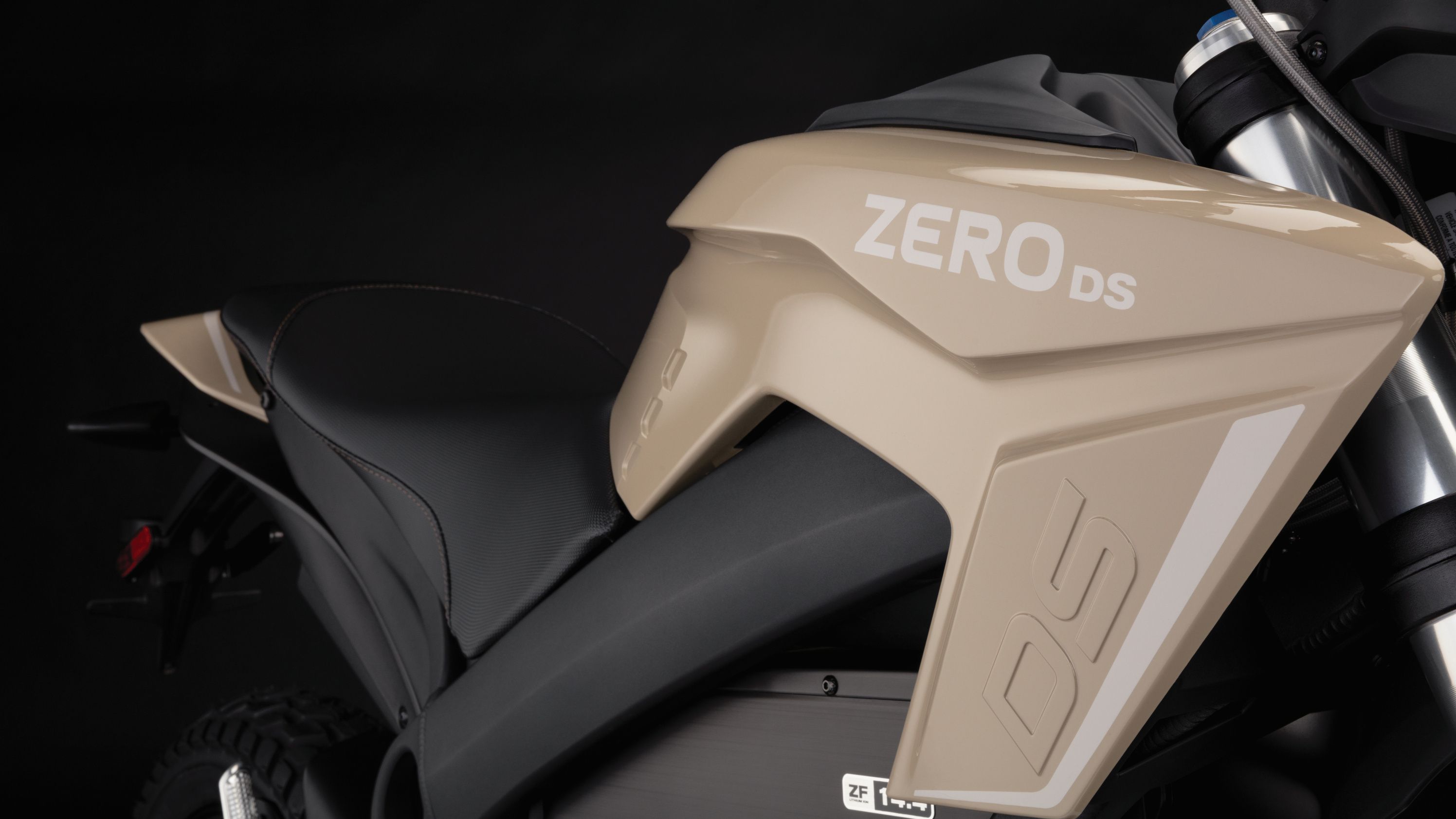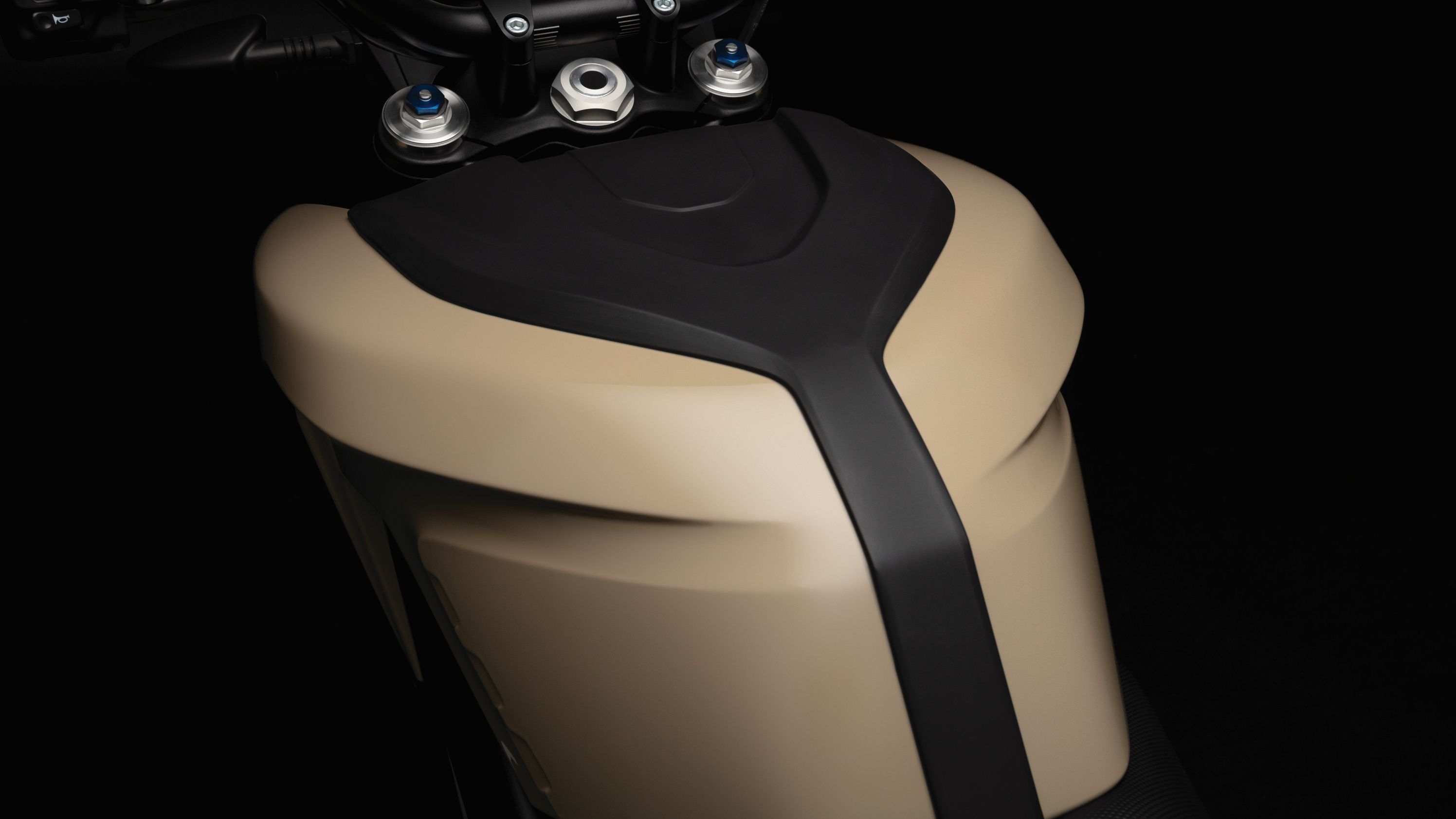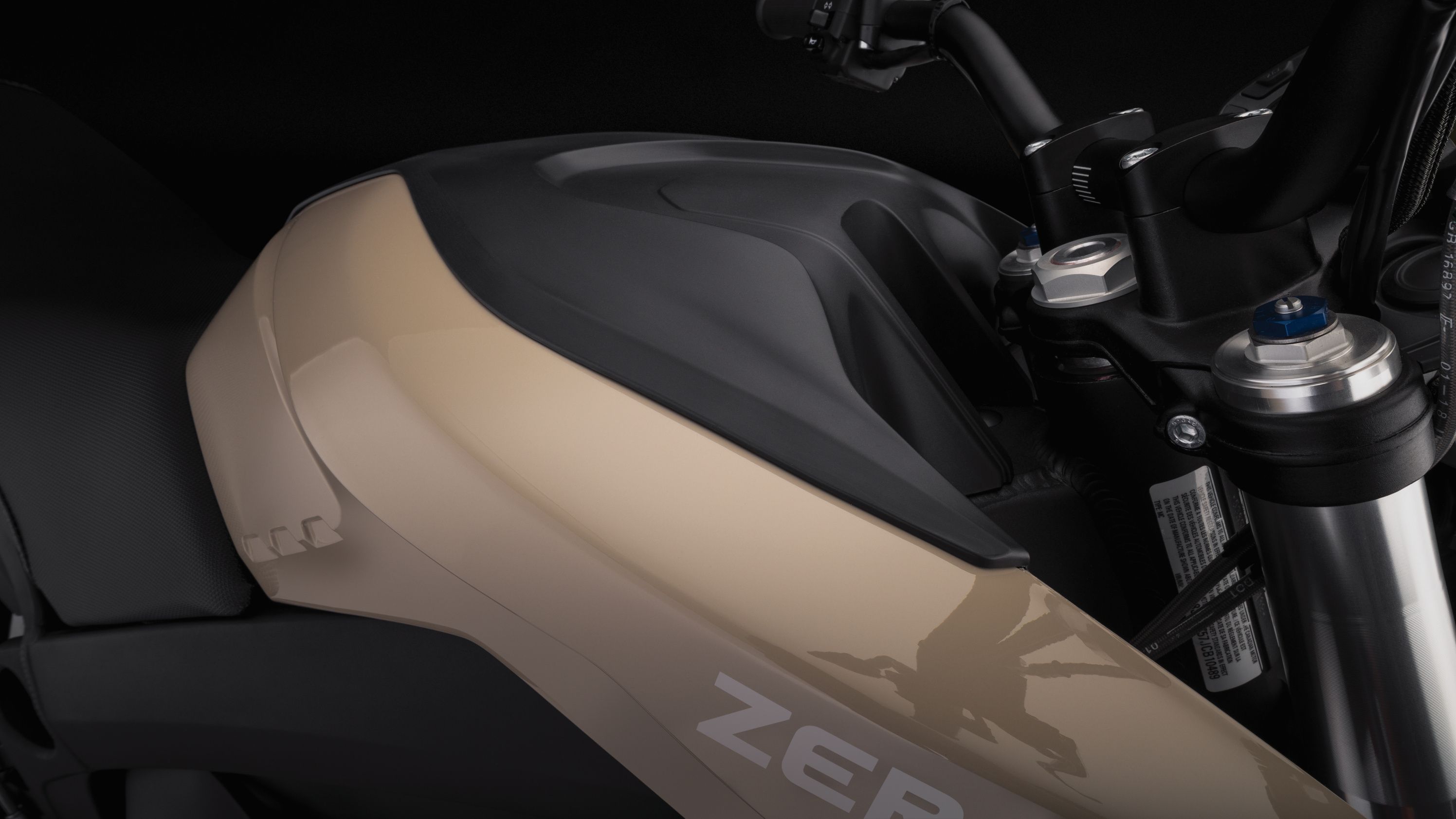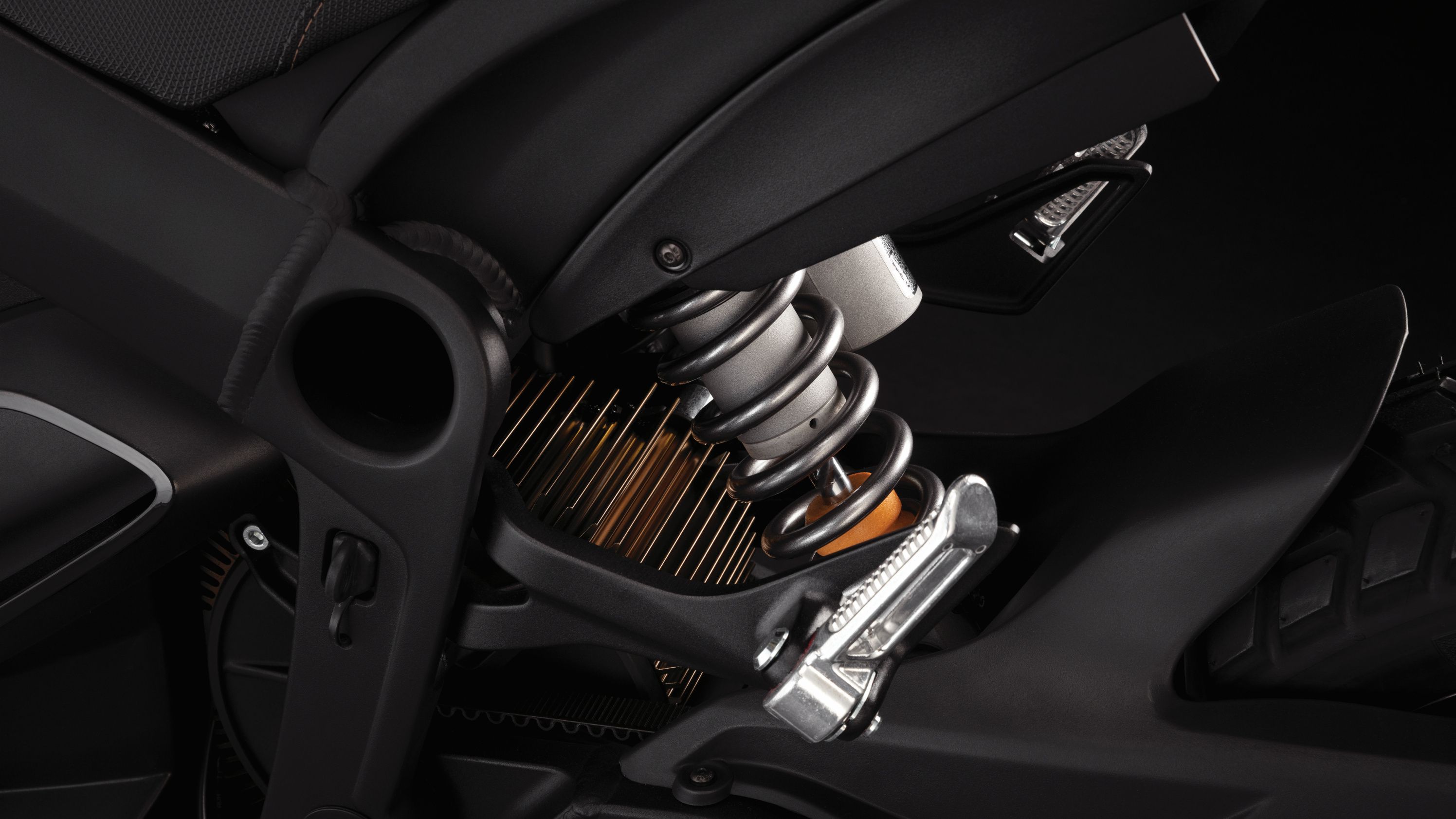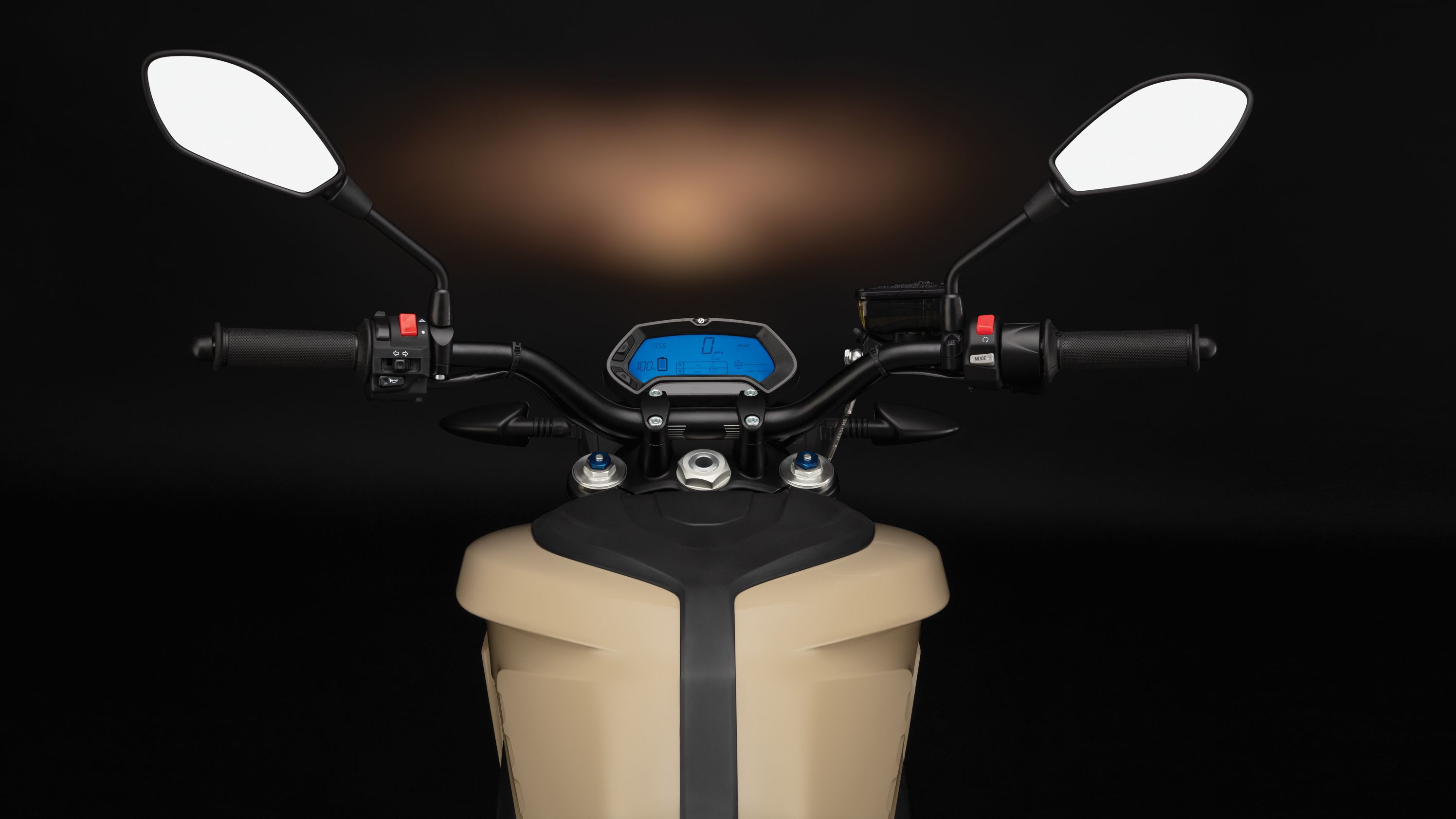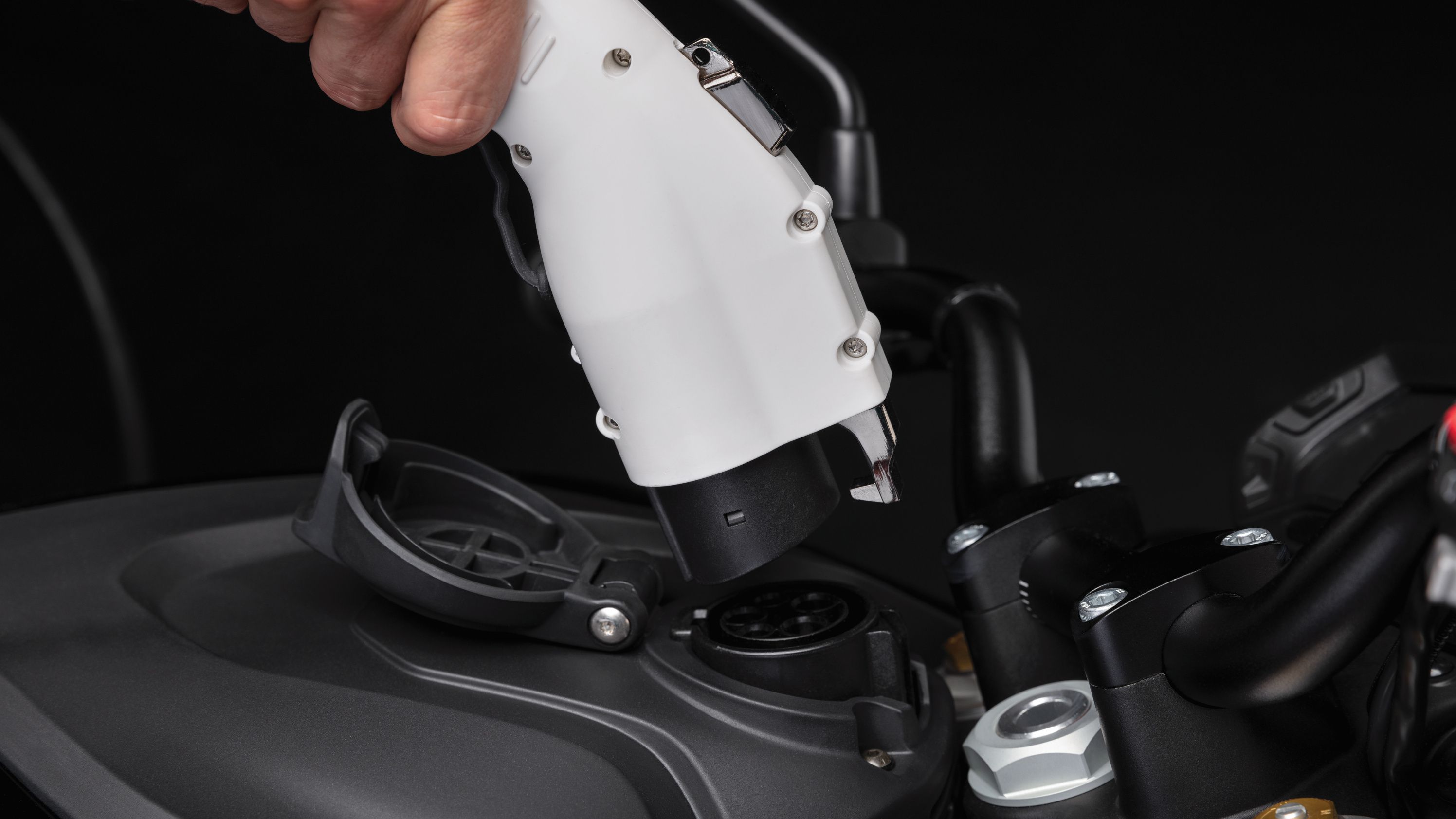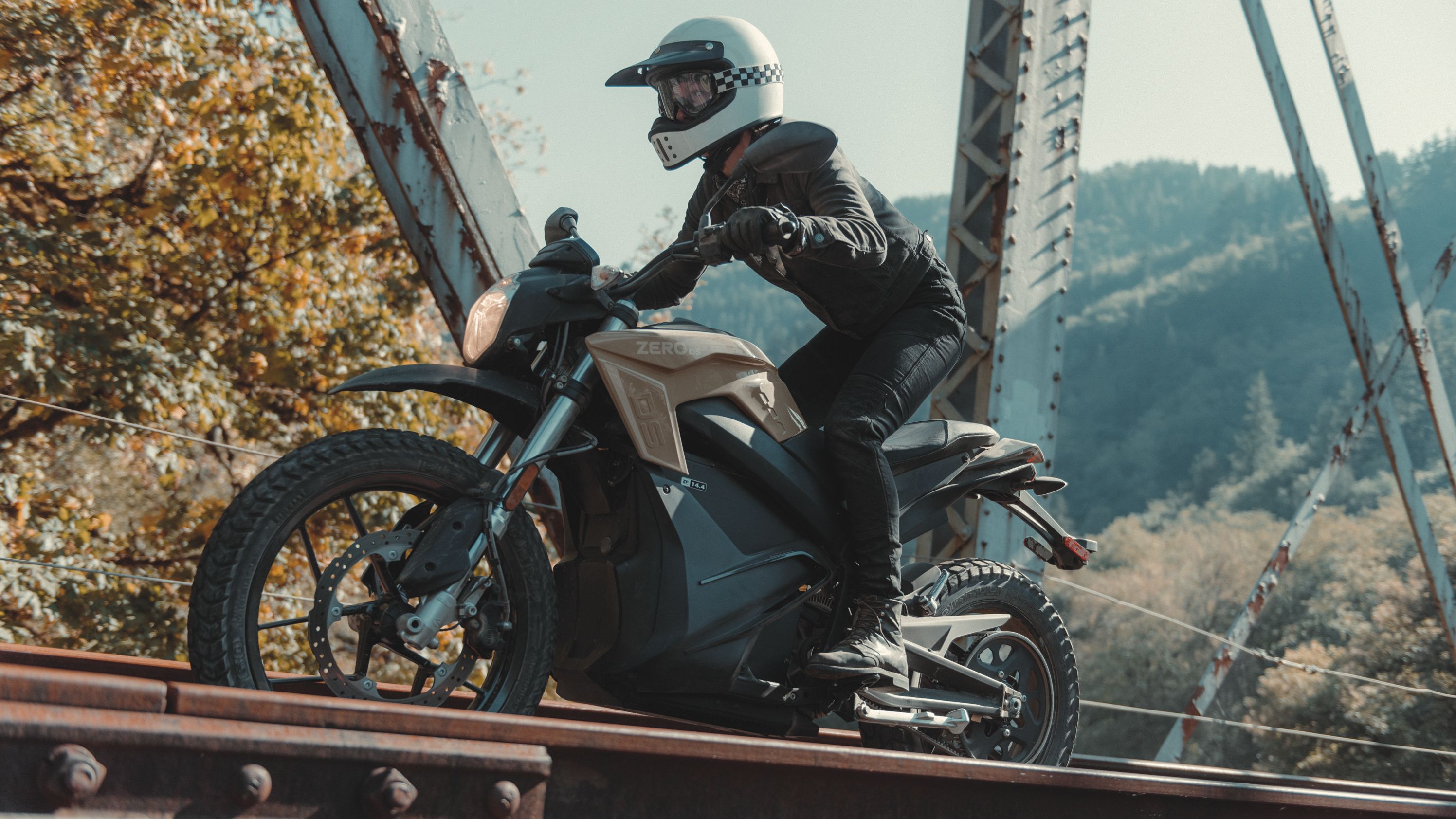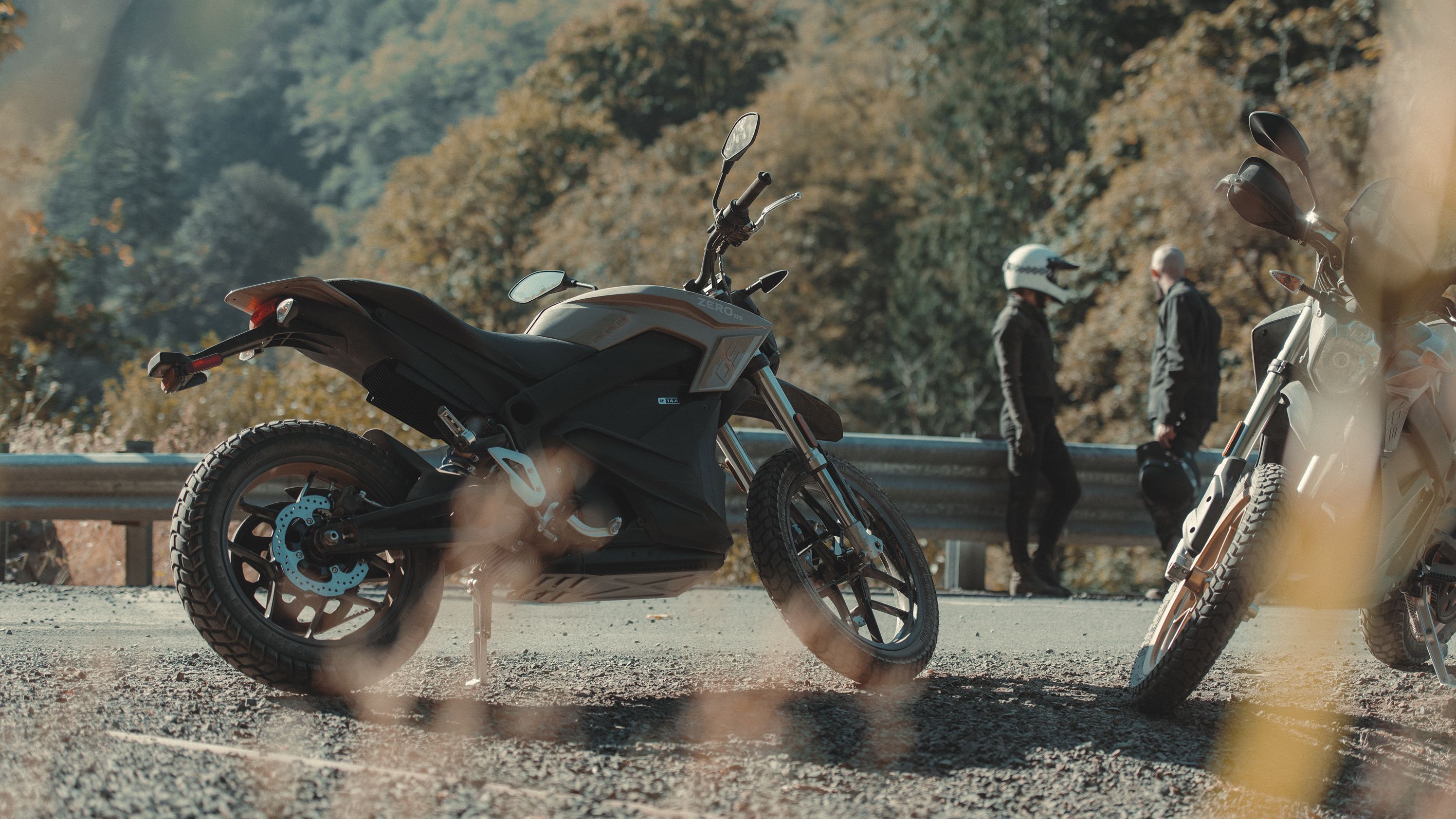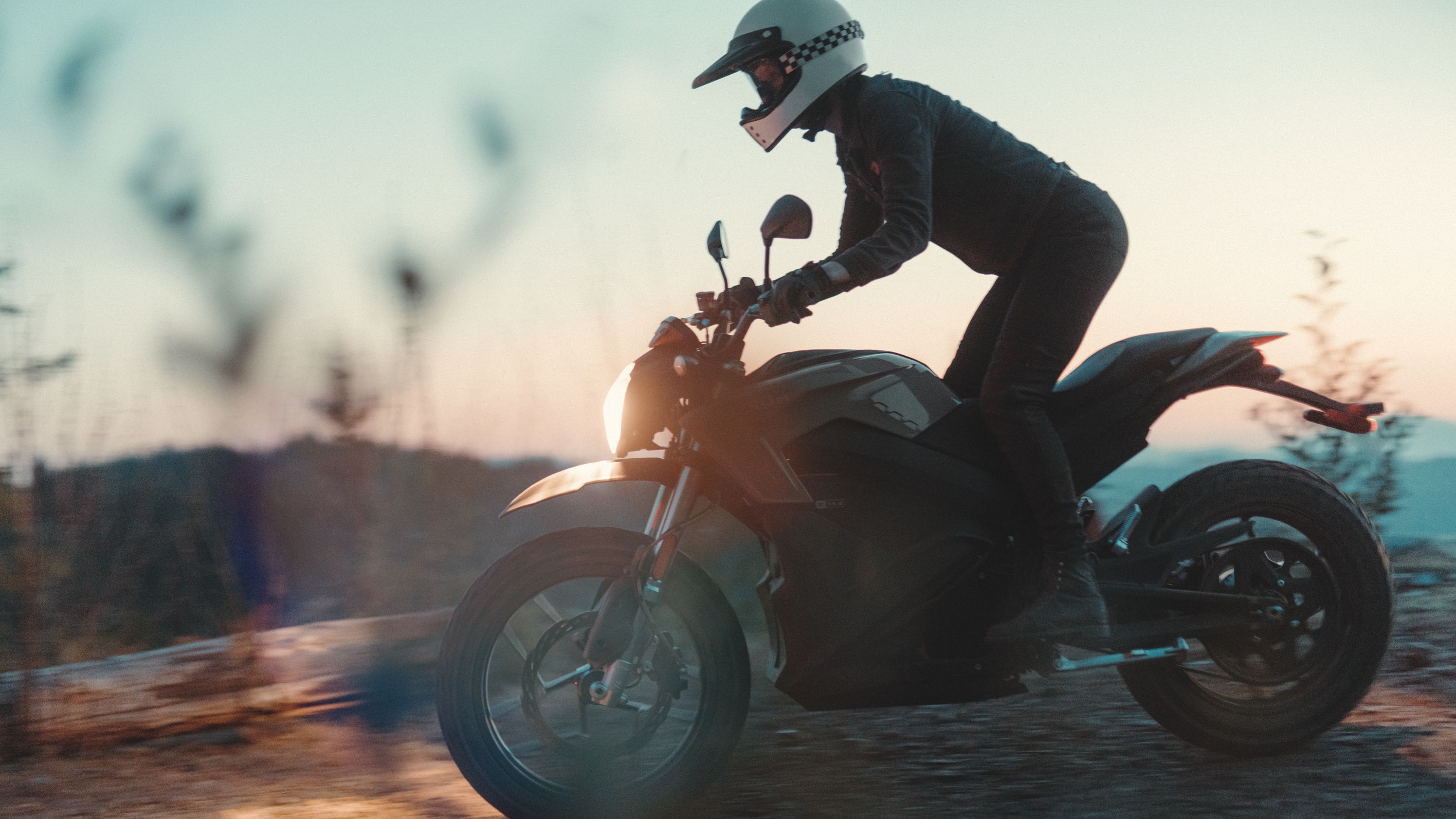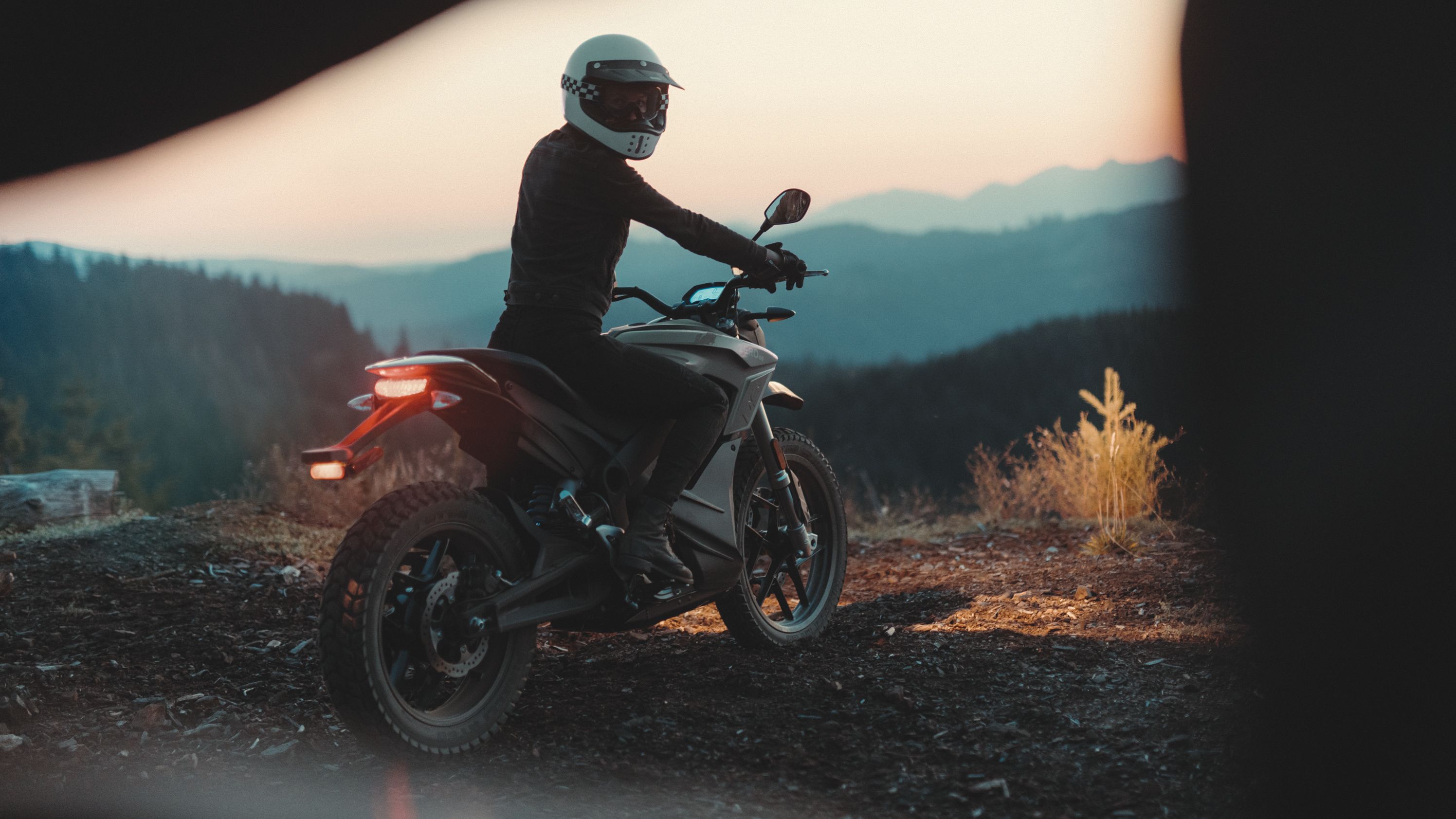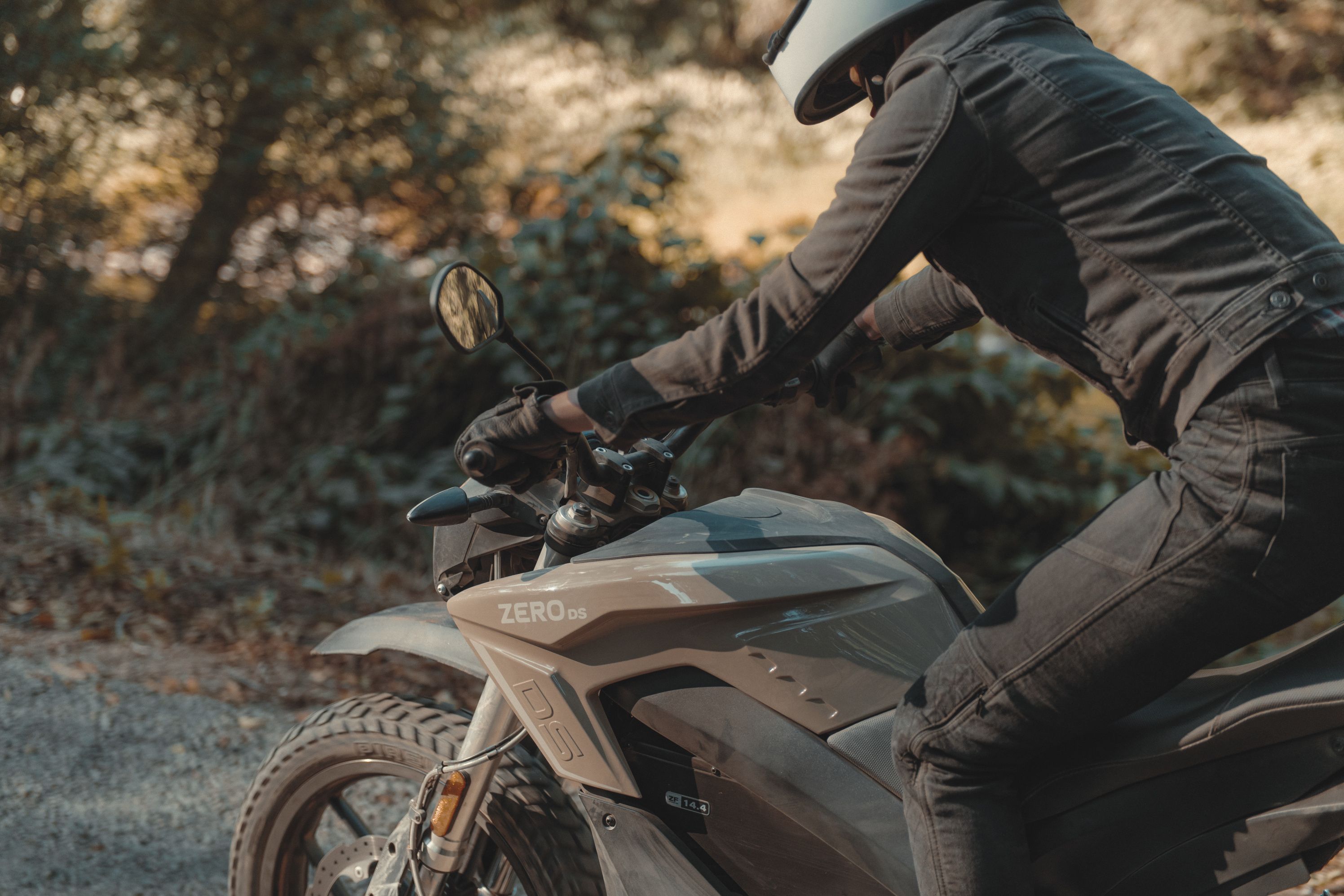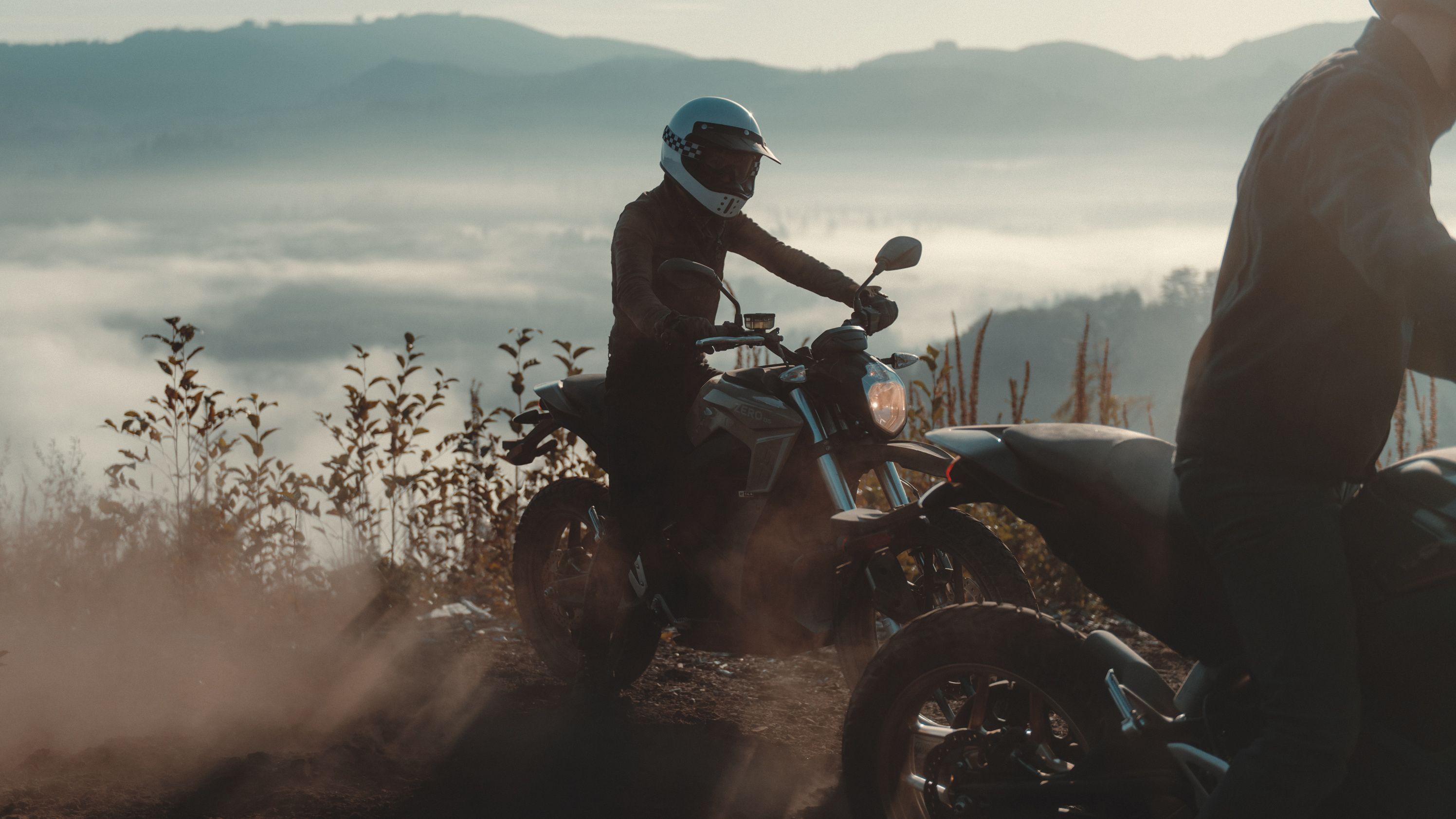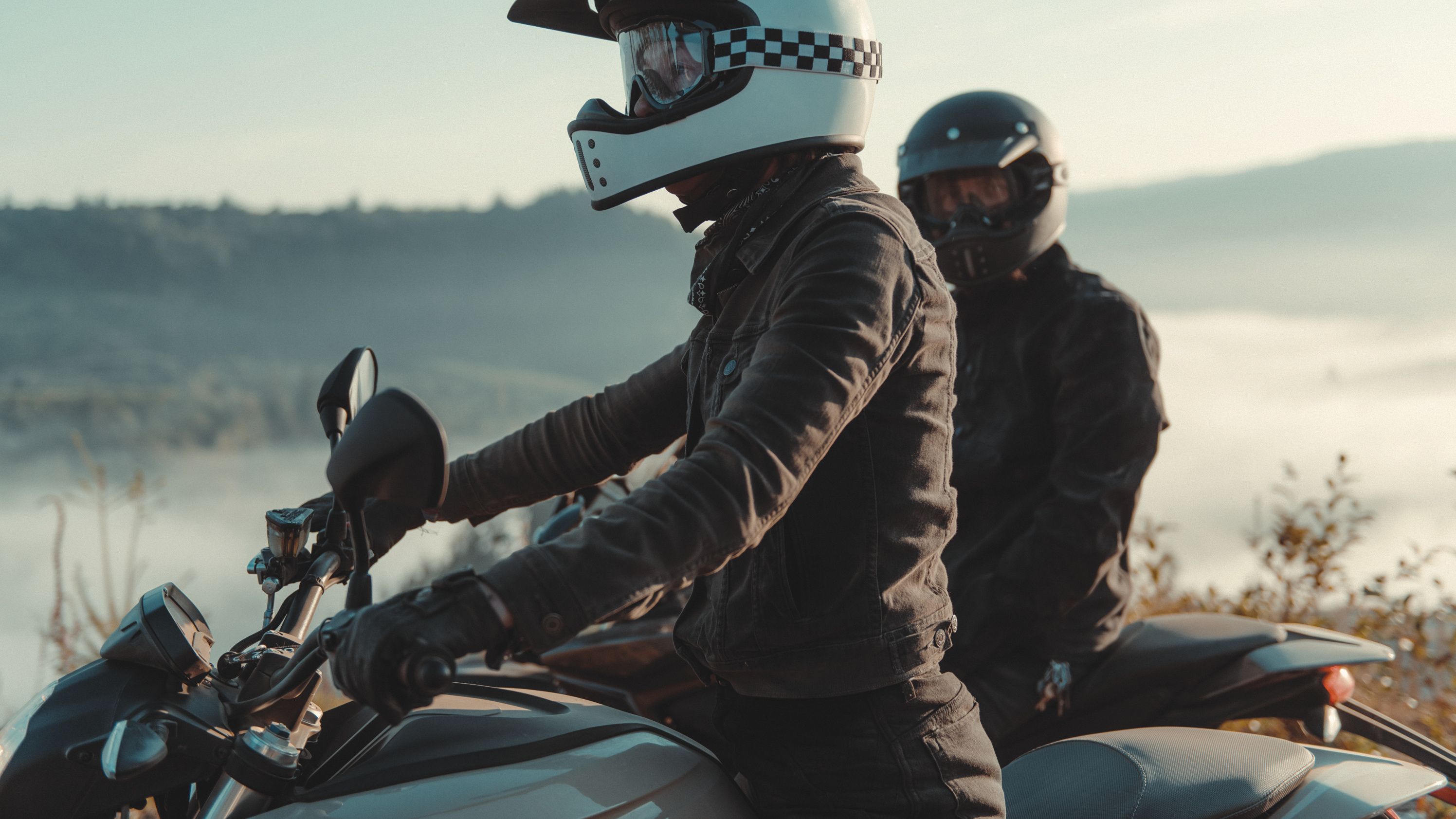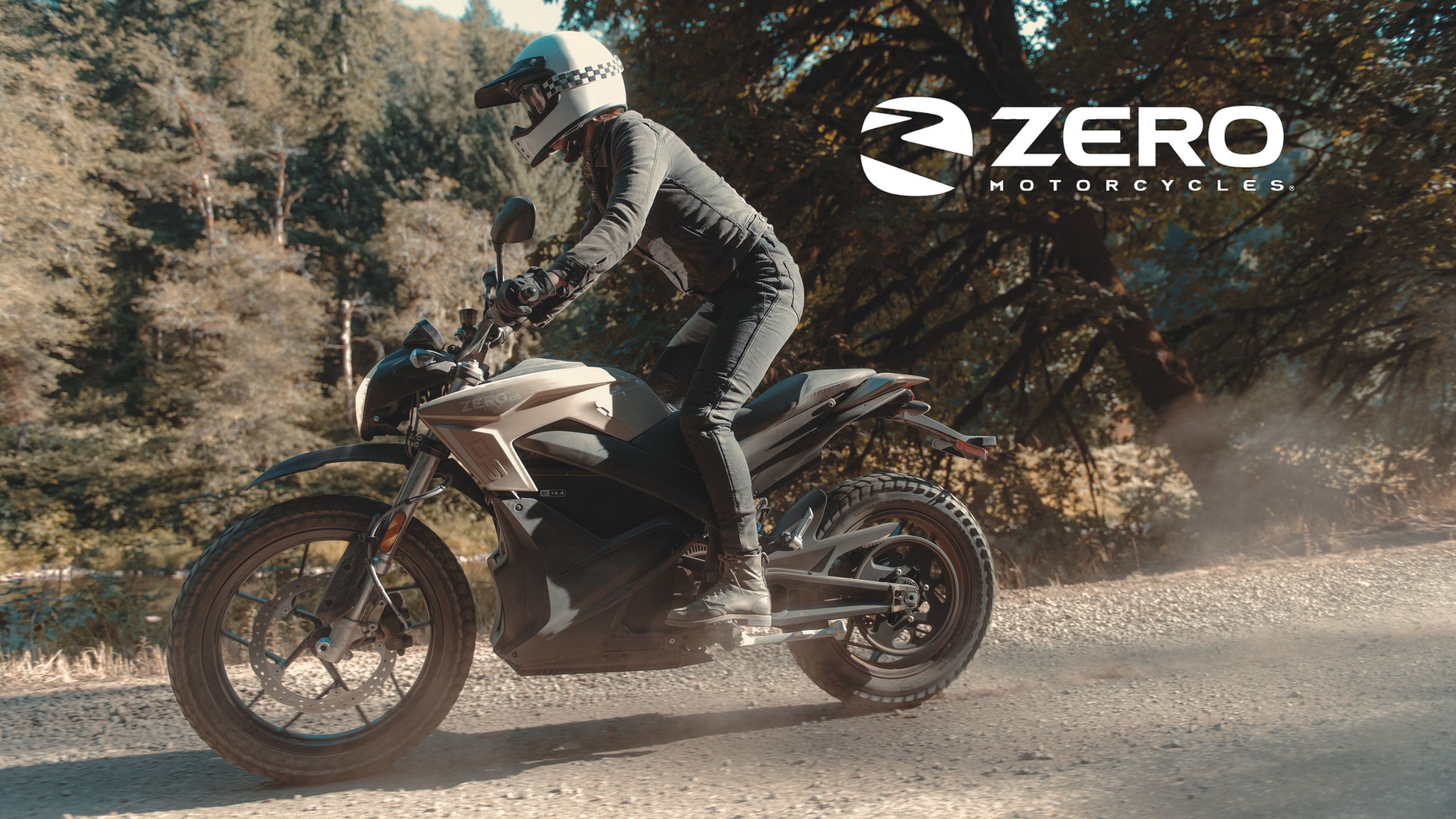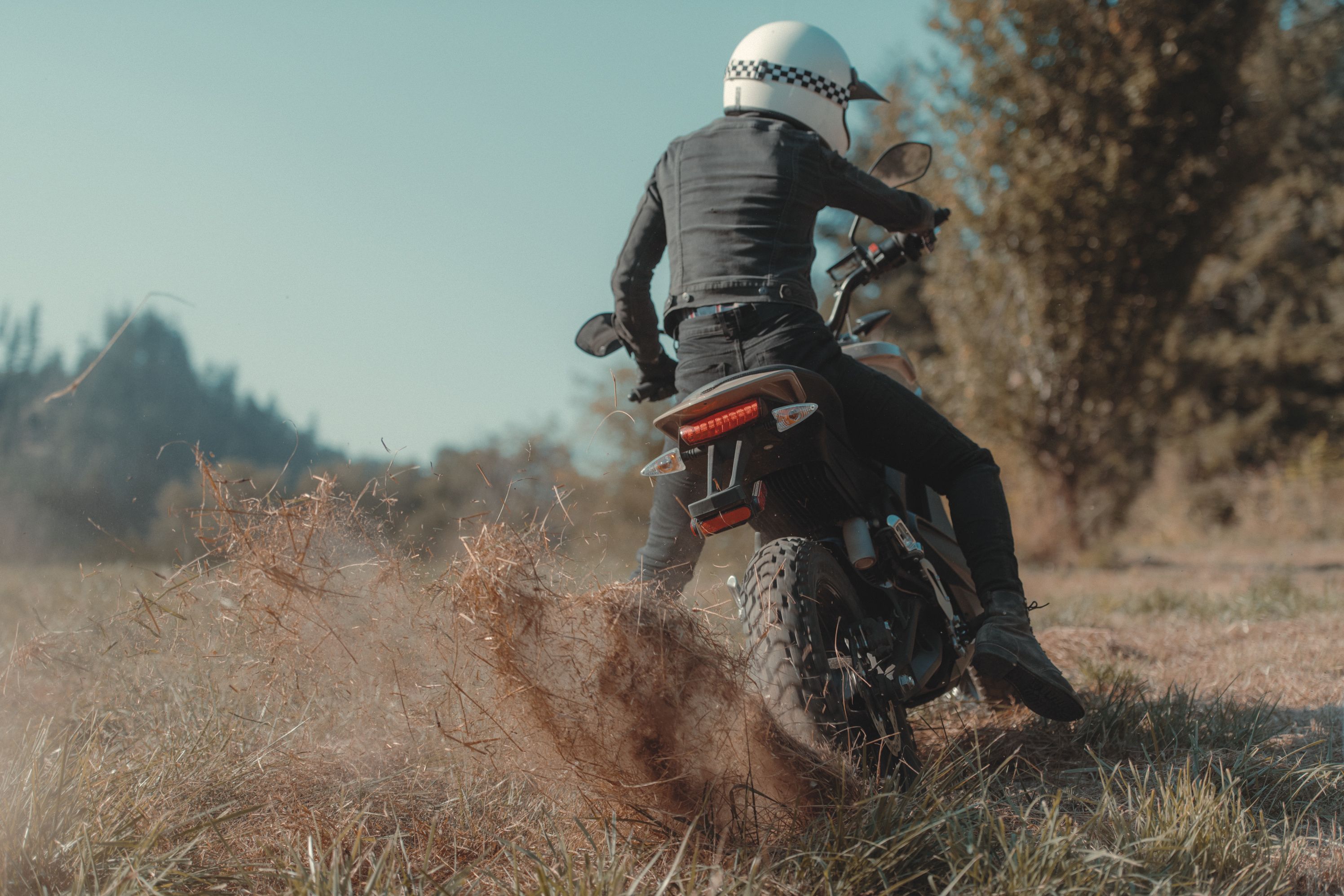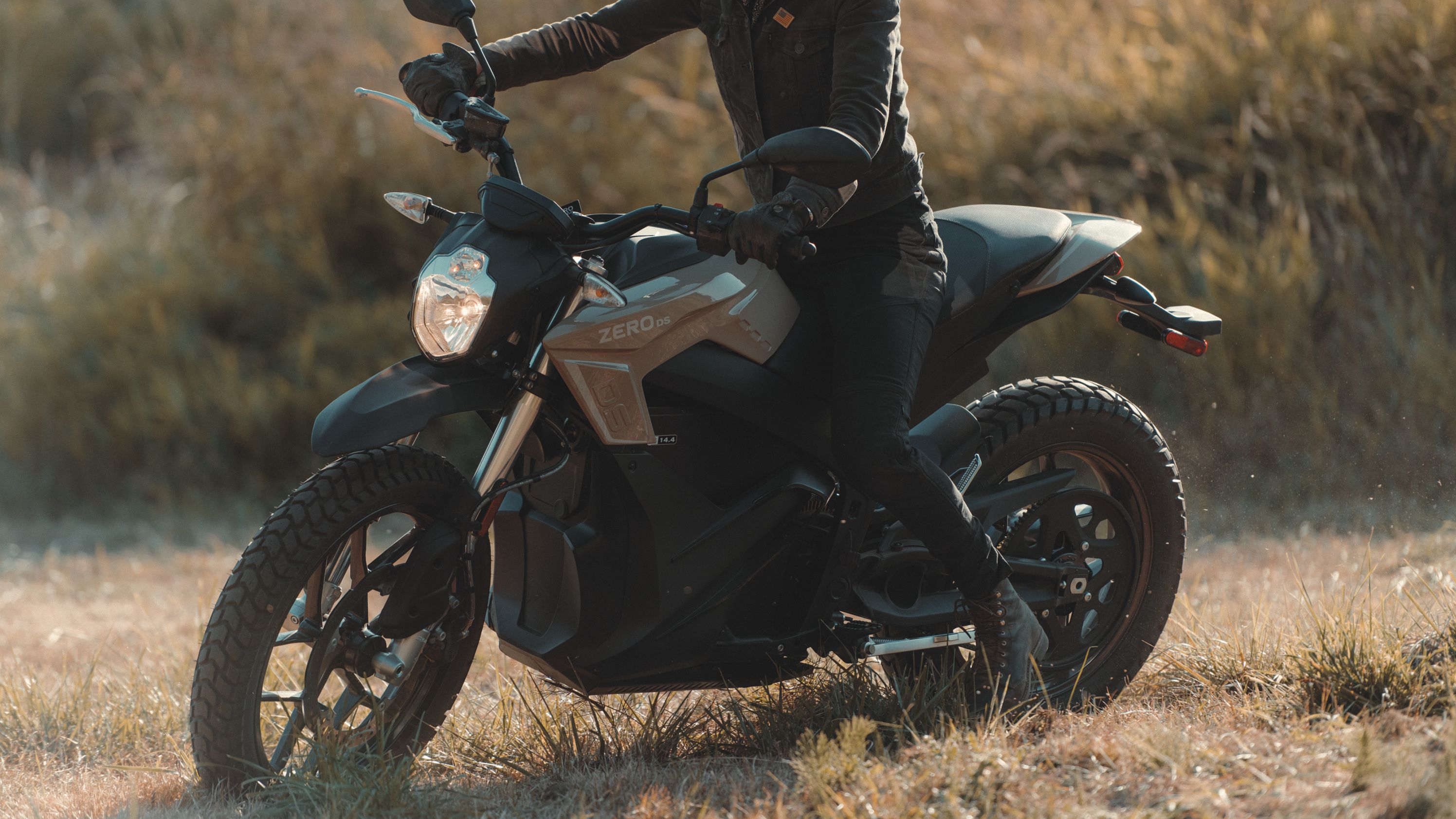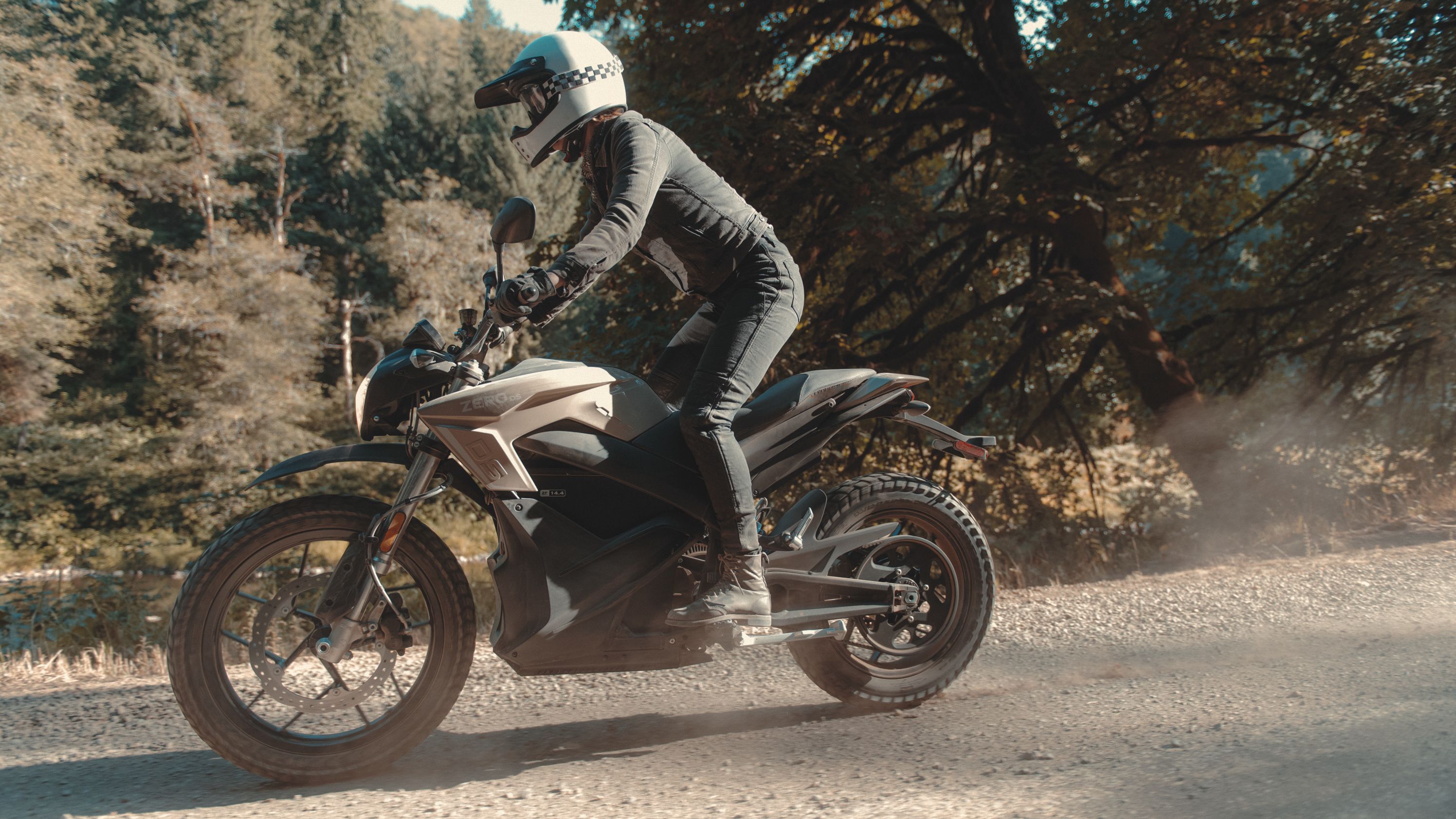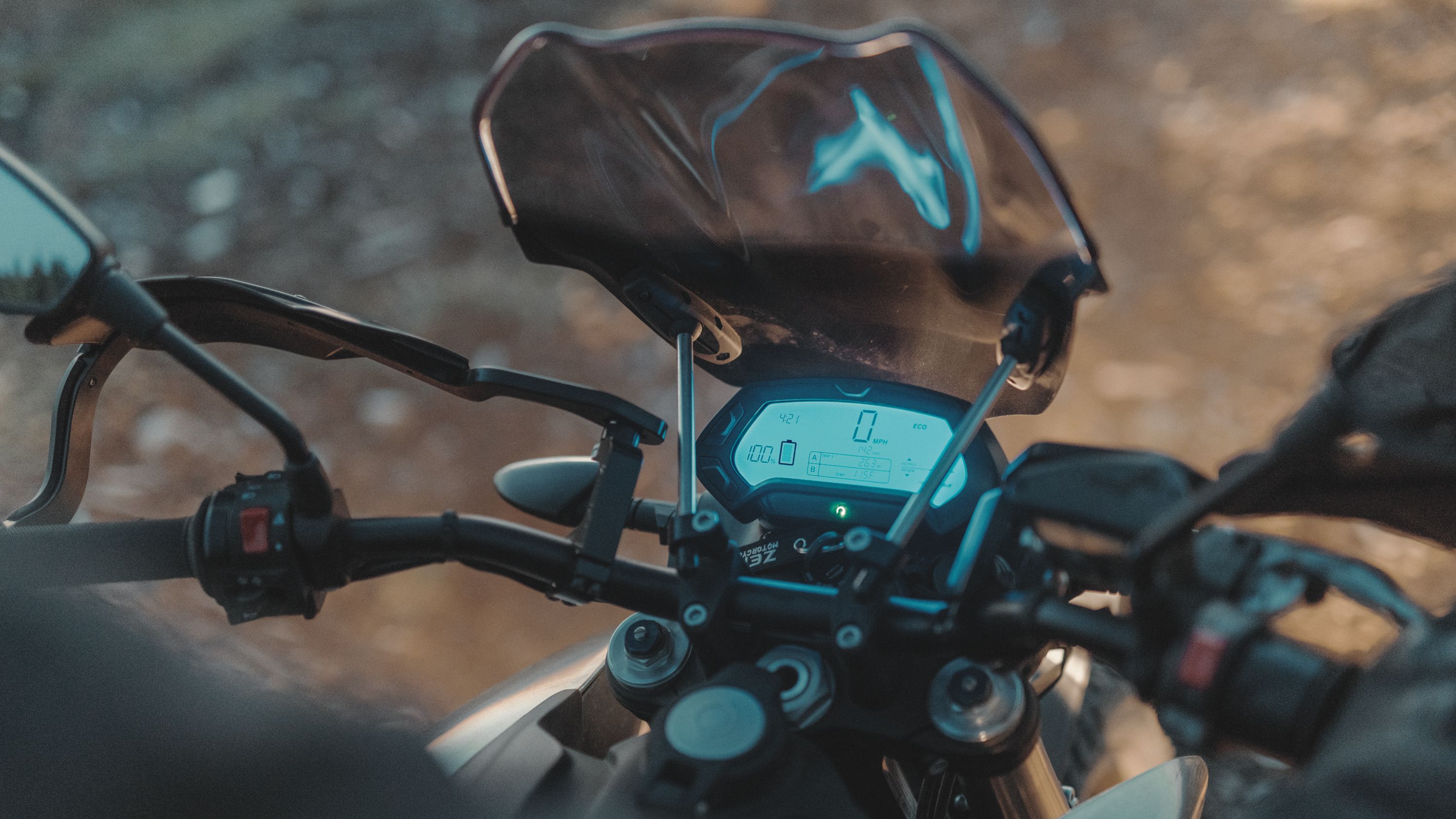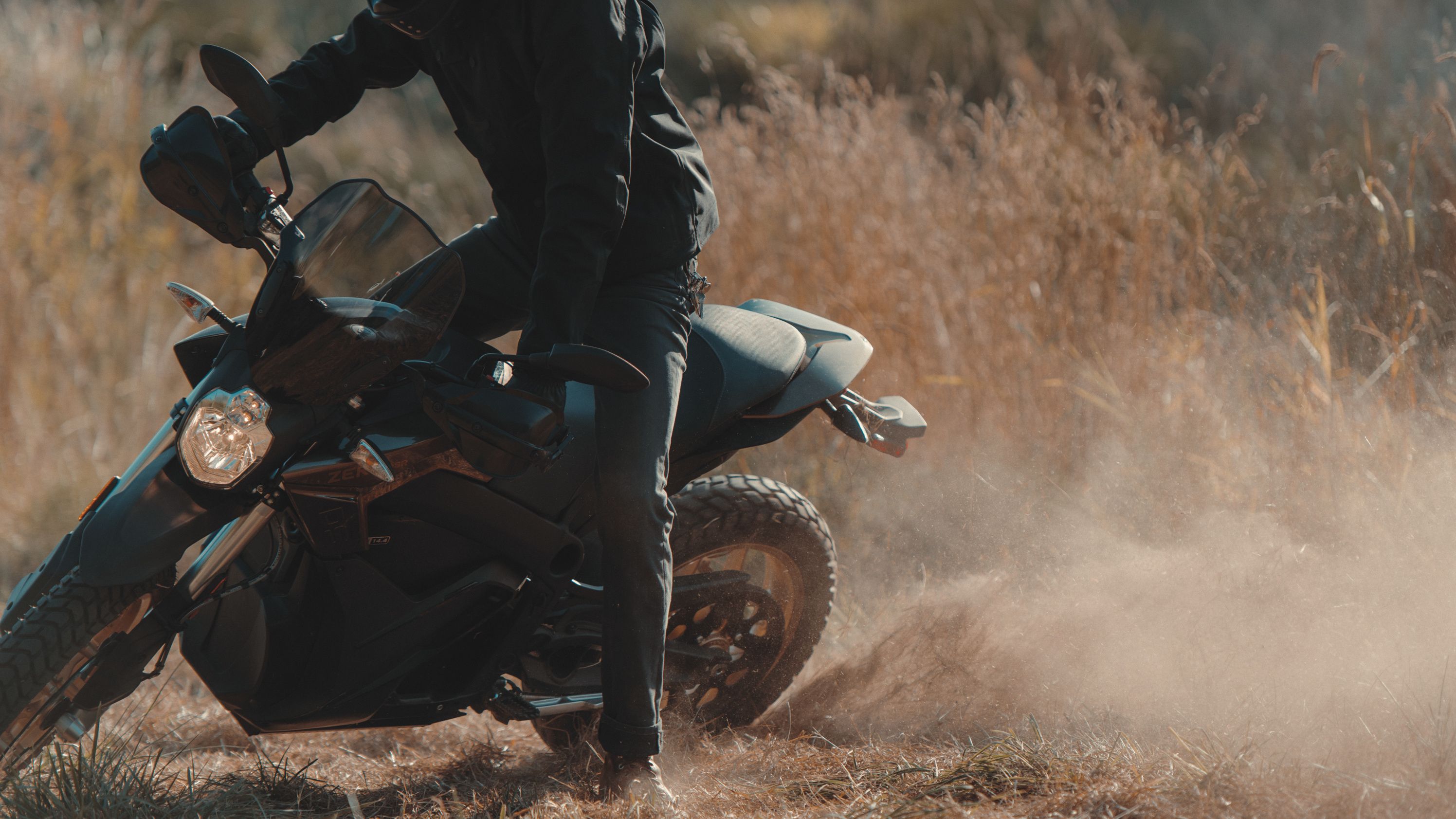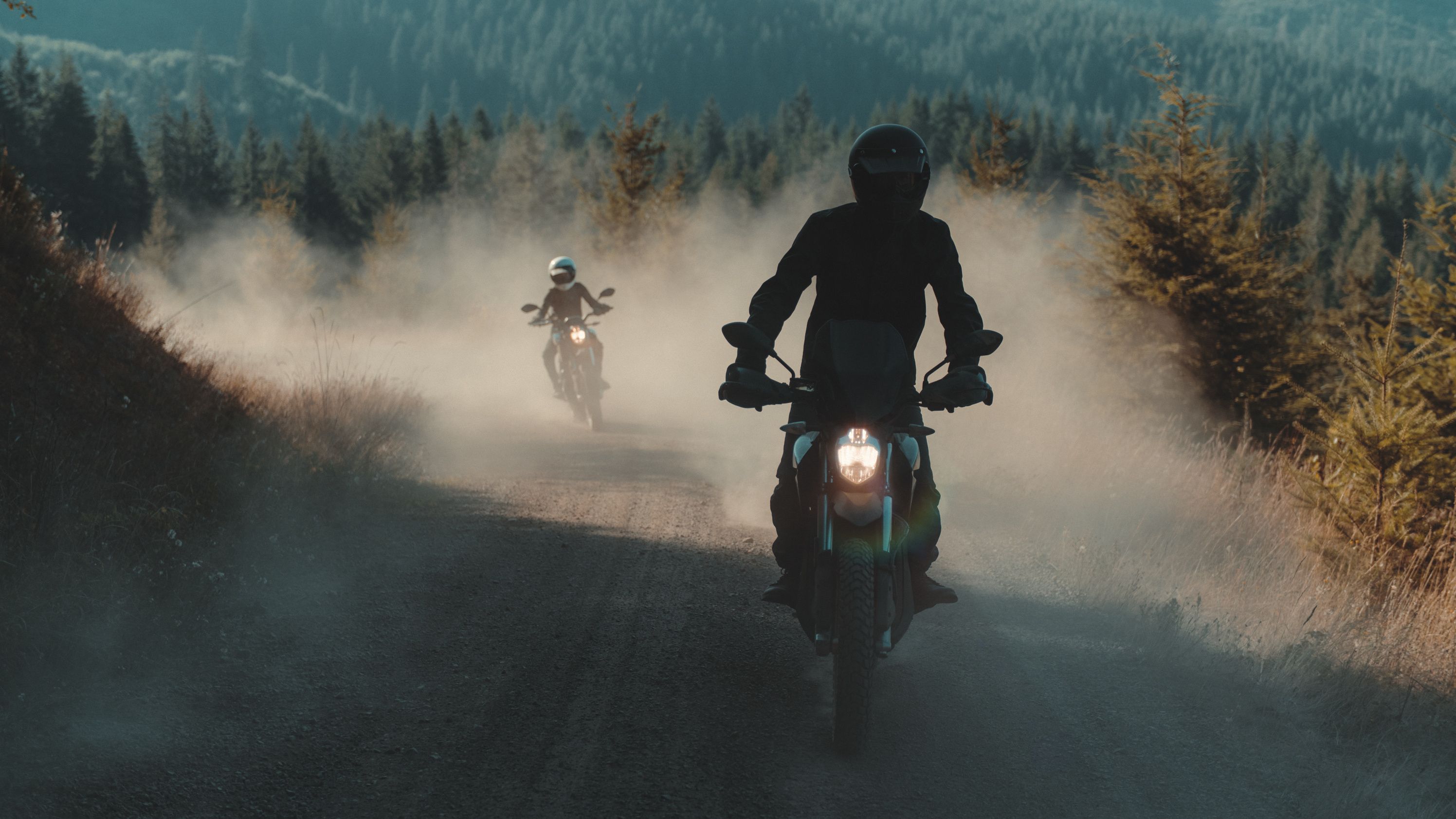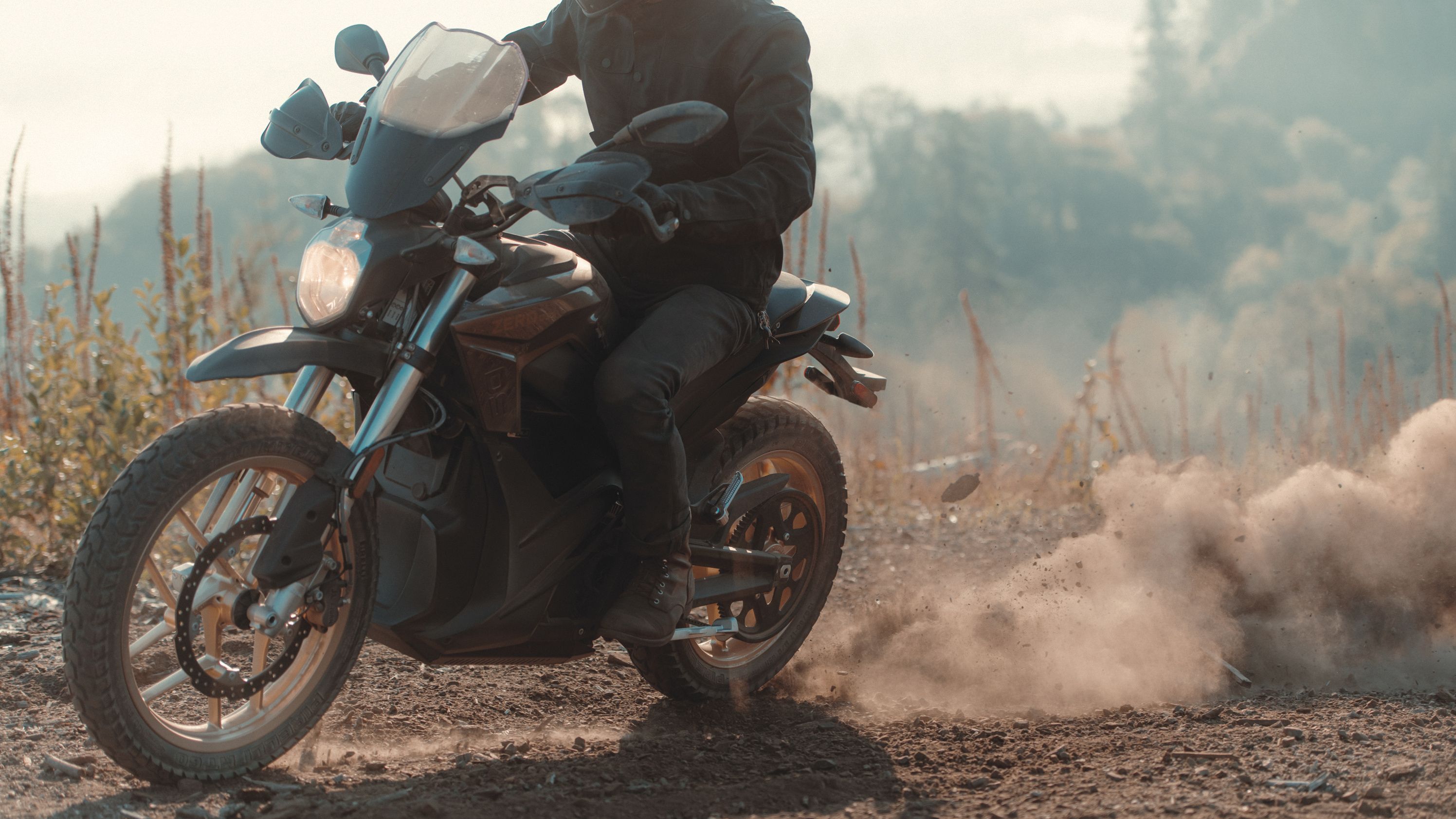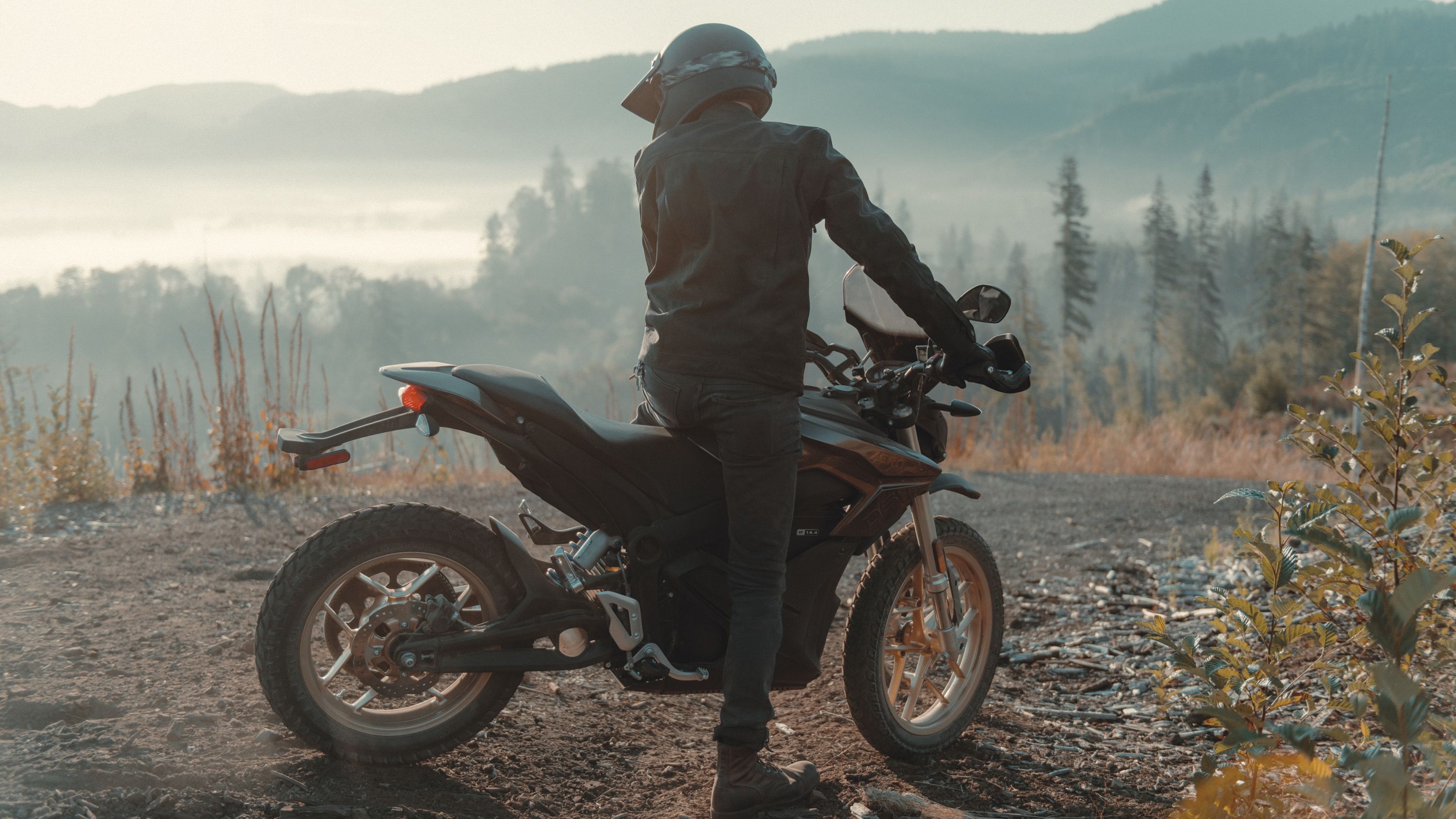For years now, Zero Motorcycles has pushed the EV-bike envelope in an attempt to show how viable/flexible battery-bikes can actually be, and the factory just took another important developmental step with a fresh set of updates for its DS and DSR. These dual-sport rides toe the genre line with their overall design, but of course, the real magic is under the hood with an all-electric drivetrain the factory graced with both a power boost and a range increase in an effort to expand the factory's footprint within this rapidly burgeoning market segment. Street-electrics generally stay in relatively civilized areas, but dual-sport rides are just as happy off the beaten path and that brings its own set of variables and issues to be resolved, so today I want to take a look at this pair to see what all the factory has done to address those concerns.
2019 Zero Motorcycles DS / DSR
- Make: Array
- Model: 2019 Zero Motorcycles DS / DSR
- Segment: Array
- [do not use] Vehicle Model: Array
2019 Zero DS / DSR Design
There can be little doubt that the overall dual-sport look is well-defined at this point, and Zero does a excellent job of hitting all the important points. It starts out right off the bat with a 19-inch front wheel that gives the wheels an asymmetrical layout meant to give the DS/DSR greater off-road capabilities, and fits right into the dual-sport mold. A tripleclamp-mounted fender contains the fling from the front wheel with clearance to accommodate the terrain-busting fork stroke with a small guard low on each side that protects the swept area of the inner fork tube, and by association, the fork seals.
The single headlight housing carries over-under beams with triangular standoff blinkers to wrap up the forward lighting, and on the DSR model there's a rally-style speed screen up top plus handguards among the stock equipment to provide some extra protection. An LCD screen handles the instrumentation across the board to include charge state, performance profile and key riding stats. A short-rise bar and low, mid-mount controls work with the 33.2-inch seat to define a relaxed rider triangle that leaves room to operate the bike while standing on the footpegs for technical off-road work. That last is also nice on long rides, 'cause at least you can stand up and give your bum a break once in a while.
In order to keep the visuals roughly similar to the rank-and-file, there's a flared “fuel tank” section that tapers down to the waist, but it's a lie; it may have a Power Tank (battery) or Charge Tank (fast charger), it's true, but one thing it'll never have is an actual bladder/reservoir for carbon-based push-o-line.
No matter what's under the paint, the flyline looks much like you'd expect from a dual-sport with a moderately-deep swale at the saddle that pulls the pilot's butt down into the machine rather than perching it on top. An upswept subframe lofts the pillion a bit with a compact taillight and turn signals to finish of the rearward lights, plus a mudguard that works with a hugger to contain the rear-wheel fling.
In silhouette, both models blend right in with the internal combustion bikes as long as you don't look too hard at the “engine” area. Overall, the look is rather pragmatic with none of the sex-on-wheels panache that Energica and even KYMCO bring to the table. But, that's OK with me; form follows function, as it should.
2019 Zero DS / DSR Chassis
Zero builds the DS line around a refined, twin-spar frame made up of aircraft-grade aluminum for the light-weight strength it imparts to the assembly. The spars are plainly visible where they exit the cheek fairing to add to the overall aesthetic, but the blackout finish makes it more of a subtlety against the achromatic treatment prevalent throughout the bike; in fact, the only splashes of color are at the faux gas tank/cheek fairings up front and the tip of the tail. I gotta' give Zero their props for their success in the performance department, but guys, you're going to have to address aesthetics at some point, and a robust palette would be a good start. Just sayin'.
Showa supplies the stems with a pair of 41 mm, inverted front forks and a 40 mm, coil-over piggy-back shock out back. Both ends come with the full trinity of adjustments -- preload and compression/rebound-damping -- and plenty of travel at an even 7 inches up front and 7.03 inches out back to soak up the shocks of off-road work.
Twin-piston J-Juan calipers bite the dual, 320 mm discs up front opposite a single-pot J-Juan and 240 mm disc with Bosch Gen 9 ABS protection on both ends. Cast rims round out the rolling chassis with Pirelli MT-60 hoops in a 100/90-19 and 130/80-17, and I can't help but wonder if laced wheels wouldn't be the the trick here given its off-road bent. The tread on these tires definitely reflect its Gemini nature and look to be particularly effective on soft surfaces.
|
Front Suspension: |
Showa 41 mm inverted cartridge forks, with adjustable spring preload, compression and rebound damping |
|
Rear Suspension: |
Showa 40 mm piston, piggy-back reservoir shock with adjustable spring preload, compression and rebound damping |
|
Front Suspension Travel: |
7.00 in (178 mm) |
|
Rear Suspension Travel: |
7.03 in (179 mm) |
|
Front Brakes |
Bosch Gen 9 ABS, J-Juan asymmetric dual piston floating caliper, 320 x 5 mm disc |
|
Rear Brakes |
Bosch Gen 9 ABS, J-Juan single piston floating caliper, 240 x 4.5 mm disc |
|
Front Tire |
Pirelli MT-60 100/90-19 |
|
Rear Tire |
Pirelli MT-60 130/80-17 |
|
Front Wheel |
2.50 x 19 |
|
Rear Wheel |
3.50 x 17 |
2019 Zero DS / DSR Drivetrain
While all of the above is delightful, and of good quality, it's the revamped drivetrain that steals the show. Let's go ahead and cleave to the onion, if you will, and look at the power. Horsepower is up by 35-percent from the previous gen with 46-ponies on tap from the bottom-tier ZF7.2 package on up to 70-ponies from the ZF14.4 package. Torque is through the roof with 78 pound-feet and 116 pound-feet on the same spread, and not only is it relatively high, it's all right there as soon as you crack the throttle so ya' better be holding on, and I ain't kidding since top speed is up by 8-percent at 98 mph for the DS and 90 mph for the DSR.
Improved lithium-ion battery chemistry gives the ZF14.4-powered models a 10-percent greater range of up to 204-miles at city speeds through its Power Tank that is, unfortunately, a pricey option. If recharge speed trumps range on your priority list, you can opt instead for the Charge Tank accessory instead. The opposite end of the range has the ZF7.2 clocking 82 miles in the city and 53 miles on the interstate. Mix and match the motors and accessories to get what works for you. As for me, I'd be going for range, range and range.
It's a direct drive, so there's no heavy gearbox or wearisome clutch lever, just twist-and-go operation. Regenerative braking puts power back in the bank when you “engine-brake” to scrub speed, and obviously, the more of that you do, the better. Charge times vary widely depending on battery size, charge state and charger accessories, but at the bottom of the scale you're looking at as much as 5.2-hours for a full charge on the base DS ZF7.2 with the 1.3 kW, on-board charger. Go for the charge tank and you can get that down to 1.5-hours. If you'd rather not spring for the Charge Tank but instead buy a couple of accessory chargers, you'll get a full charge in 1.6 hours. That's pretty doggone fast folks, and it'll run on 110/220 V, so you can plug it up on a household circuit.
At the top of the food chain is the DSR ZF14.4 plus Power Tank. The on-board charger will trickle charge it up to full in a leisurely 12.1-hours. A couple of accessory chargers will get that down to 3.3-hours for a full charge. Yeah, that's right, 204-miles on a 3.3-hour charge at a cost of around $2 per full charge. The rest falls somewhere in between, depending upon how you mix-and-match the goodies.
2019 Zero DS / DSR Pricing
The base DS ZF7.2 rolls for $10,995 MSRP and the ZF14.4 goes for $13,995. At the top of the DS range, a Power Tank comes stock to bump the price up to $16,890. The DSR is proud of all that extra performance, so the base model DSR ZF14.4 rolls for $16,495 and a whopping $19,390 if you want that Power Tank yummy-goodness. That's a pretty good spread for what is, essentially, a single model, in both price and capability.
2019 Zero DS / DSR Competitors
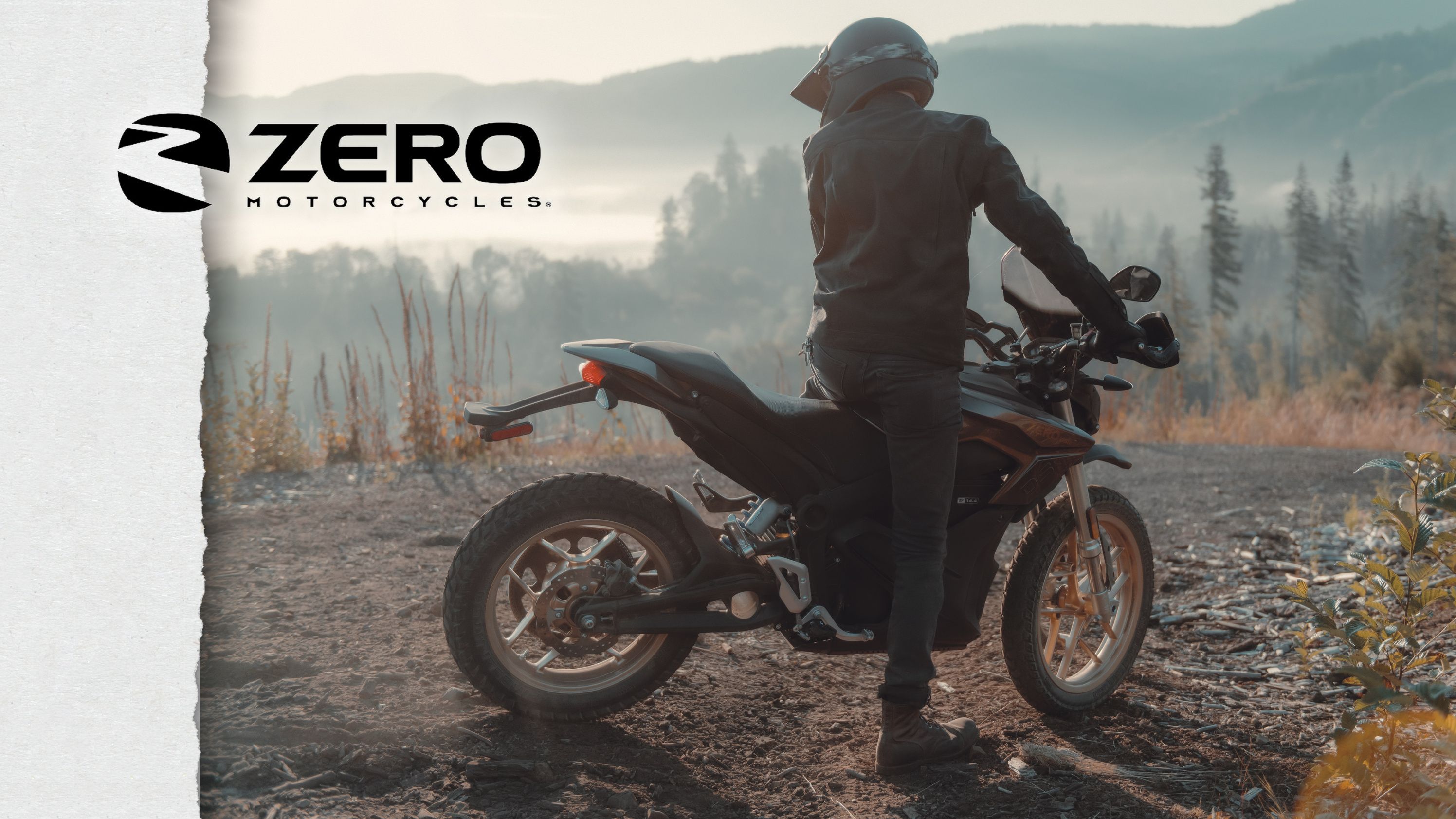
|
right> |
While there are several EV bikes I could use for a performance comparison, I wanted to pit it against the other end of the aesthetic spectrum since there's no direct comparison available due to a lack of diversified EV lineups from the other manufacturers. With that in mind, I grabbed the Ego from Italian builder Energica. Yeah, it's built as a superbike with almost complete coverage by aerodynamic body panels to form the usual cowl scoop that looks like it doubles as a radiator-type shroud for the oil-cooler. The Ego's Sport Black Kit package would blend right into a pack of super/street bikes, and only give itself away visually at the cowling cut outs with some unusual-looking structures all covered with cooling fins.
Usd, 43 mm Marzocchi forks come with the trifecta, but the Bitubo shock out back is limited to adjustable spring preload and rebound damping to give Zero a slight edge in the stems. Brakes are a wash with dual Brembo calipers up front, 330 mm discs and ABS protection. Energica gets points for its traction-control feature, but its real claim to fame is its performance. The direct-drive electric motor produces 145-horsepower and 148 pound-feet of torque, and we don't know what the actual top speed is because it comes governed down to a 150 mph top speed. Yeah, that's right governed down to a leisurely 150 mph, which by the way, is way faster than a non-pro needs to even contemplate. It also comes with a walking-speed reverse to make parking-lot maneuvers a breeze.
Recharge times are competitive with a 3.5-hour charge time (Mode 2 or 3) and a Fast Charge feature that'll slam a full charge into the pack in only 25-minutes through the Mode 4 feature. Both rides come with a Long Rest Period feature that safeguards the battery over long periods of inactivity such as over the Winter.
However, the Ego comes out on top of the fandanglery category with ride modes and regeneration modes -- four each -- that give you complete control over your ride. You pay for it though; the Ego rolls for $34,000 which is more that twice the price of the least expensive Zero product. At the end of the day, you just have to ask yourself how you want to use the bike to choose between these two.
He Said
“It seems like every week, news of some new EV bike hits the presses with new players/models, and though the field is becoming more populated, Zero is still blazing a trail into new territory, literally, with its dual-sport lineup. The factory got out ahead of the curve early and is shaping the genre, so they've got toys that nobody else can touch. Yet. Every tomorrow is a new day with a chance for the next game-changer to roll out, so Zero would do well to not rest on its laurels here.”
She Said
My wife and fellow motorcycle writer, Allyn Hinton, says, “Seriously, range anxiety is a thing so anything to boost range and recharge time is a big deal. Unless you have a very short commute, consider springing for the full range/recharge package because hunting for a place to recharge isn't the same as hunting for a gas station unless you live in an area that has some recharging infrastructure already in place.”
2019 Zero DS Specifications
|
Model |
ZERO DS ZF7.2 |
ZERO DS ZF14.4 |
ZERO DS ZF14.4 +Power tank |
|
Range: |
|||
|
City: |
82 miles (132 km) |
163 miles (262 km) |
204 miles (328 km) |
|
Highway, 55 mph (89 km/h): |
49 miles (79 km) |
98 miles (158 km) |
122 miles (196 km) |
|
∟Combined: |
61 miles (98 km) |
122 miles (196 km) |
153 miles (246 km) |
|
Highway, 70 mph (113 km/h): |
39 miles (63 km) |
78 miles (126 km) |
97 miles (156 km) |
|
∟Combined: |
53 miles (85 km) |
105 miles (169 km) |
132 miles (212 km) |
|
Motor: |
|||
|
Peak torque: |
78 ft-lb (106 Nm) |
81 ft-lb (110 Nm) |
81 ft-lb (110 Nm) |
|
Peak power: |
46 hp (34 kW) @ 4,300 rpm |
60 hp (45 kW) @ 5,300 rpm |
60 hp (45 kW) @ 5,300 rpm |
|
Top speed (max): |
98 mph (158 km/h) |
98 mph (158 km/h) |
98 mph (158 km/h) |
|
Top speed (sustained): |
80 mph (129 km/h) |
85 mph (137 km/h) |
85 mph (137 km/h) |
|
Type: |
Z-Force® 75-5 passively air-cooled, high efficiency, radial flux, interior permanent magnet, brushless motor |
Z-Force® 75-7 passively air-cooled, high efficiency, radial flux, interior permanent magnet, brushless motor |
Z-Force® 75-7 passively air-cooled, high efficiency, radial flux, interior permanent magnet, brushless motor |
|
Controller: |
High efficiency, 550 amp, 3-phase brushless controller with regenerative deceleration |
High efficiency, 550 amp, 3-phase brushless controller with regenerative deceleration |
High efficiency, 550 amp, 3-phase brushless controller with regenerative deceleration |
|
Power System: |
|||
|
Power pack: |
Z-Force® Li-Ion intelligent integrated |
Z-Force® Li-Ion intelligent integrated |
Z-Force® Li-Ion intelligent integrated |
|
Max capacity: |
7.2 kWh |
14.4 kWh |
18.0 kWh |
|
Nominal capacity: |
6.3 kWh |
12.6 kWh |
15.8 kWh |
|
Charger type: |
1.3 kW, integrated |
1.3 kW, integrated |
1.3 kW, integrated |
|
Charge time (standard): |
5.2 hours (100% charged) / 4.7 hours (95% charged) |
9.8 hours (100% charged) / 9.3 hours (95% charged) |
12.1 hours (100% charged) / 11.6 hours (95% charged) |
|
∟With Charge Tank option: |
1.5 hours (100% charged) / 1.0 hour (95% charged) |
2.5 hours (100% charged) / 2.0 hours (95% charged) |
N/A |
|
∟With one accessory charger: |
3.1 hours (100% charged) / 2.6 hours (95% charged) |
5.7 hours (100% charged) / 5.2 hours (95% charged) |
7.0 hours (100% charged) / 6.5 hours (95% charged) |
|
∟With max accessory chargers: |
1.6 hours (100% charged) / 1.1 hours (95% charged) |
2.8 hours (100% charged) / 2.3 hours (95% charged) |
3.3 hours (100% charged) / 2.8 hours (95% charged) |
|
Input: |
Standard 110 V or 220 V |
Standard 110 V or 220 V |
Standard 110 V or 220 V |
|
Drivetrain: |
|||
|
Transmission: |
Clutchless direct drive |
Clutchless direct drive |
Clutchless direct drive |
|
Final drive: |
90T / 18T, Poly Chain® HTD® Carbon™ belt |
90T / 20T, Poly Chain® HTD® Carbon™ belt |
90T / 20T, Poly Chain® HTD® Carbon™ belt |
|
Chassis / Suspension / Brakes: |
|||
|
Front Suspension: |
Showa 41 mm inverted cartridge forks, with adjustable spring preload, compression and rebound damping |
Showa 41 mm inverted cartridge forks, with adjustable spring preload, compression and rebound damping |
Showa 41 mm inverted cartridge forks, with adjustable spring preload, compression and rebound damping |
|
Rear Suspension: |
Showa 40 mm piston, piggy-back reservoir shock with adjustable spring preload, compression and rebound damping |
Showa 40 mm piston, piggy-back reservoir shock with adjustable spring preload, compression and rebound damping |
Showa 40 mm piston, piggy-back reservoir shock with adjustable spring preload, compression and rebound damping |
|
Front Suspension Travel: |
7.00 in (178 mm) |
7.00 in (178 mm) |
7.00 in (178 mm) |
|
Rear Suspension Travel: |
7.03 in (179 mm) |
7.03 in (179 mm) |
7.03 in (179 mm) |
|
Front Brakes: |
Bosch Gen 9 ABS, J-Juan asymmetric dual piston floating caliper, 320 x 5 mm disc |
Bosch Gen 9 ABS, J-Juan asymmetric dual piston floating caliper, 320 x 5 mm disc |
Bosch Gen 9 ABS, J-Juan asymmetric dual piston floating caliper, 320 x 5 mm disc |
|
Rear Brakes: |
Bosch Gen 9 ABS, J-Juan single piston floating caliper, 240 x 4.5 mm disc |
Bosch Gen 9 ABS, J-Juan single piston floating caliper, 240 x 4.5 mm disc |
Bosch Gen 9 ABS, J-Juan single piston floating caliper, 240 x 4.5 mm disc |
|
Front Tire: |
Pirelli MT-60 100/90-19 |
Pirelli MT-60 100/90-19 |
Pirelli MT-60 100/90-19 |
|
Rear Tire: |
Pirelli MT-60 130/80-17 |
Pirelli MT-60 130/80-17 |
Pirelli MT-60 130/80-17 |
|
Front Wheel: |
2.50 x 19 |
2.50 x 19 |
2.50 x 19 |
|
Rear Wheel: |
3.50 x 17 |
3.50 x 17 |
3.50 x 17 |
|
Dimensions: |
|||
|
Wheelbase: |
56.2 in (1,427 mm) |
56.2 in (1,427 mm) |
56.2 in (1,427 mm) |
|
Seat height: |
33.2 in (843 mm) |
33.2 in (843 mm) |
33.2 in (843 mm) |
|
Rake: |
26.5° |
26.5° |
26.5° |
|
Trail: |
4.6 in (117 mm) |
4.6 in (117 mm) |
4.6 in (117 mm) |
|
Weight: |
|||
|
Curb weight: |
317 lb (144 kg) |
413 lb (187 kg) |
457 lb (207 kg) |
|
Carrying capacity: |
417 lb (189 kg) |
362 lb (164 kg) |
318 lb (144 kg) |
|
Economy: |
|||
|
Equivalent fuel economy (city): |
435 MPGe (0.54 l/100 km) |
435 MPGe (0.54 l/100 km) |
435 MPGe (0.54 l/100 km) |
|
Equivalent fuel economy (highway): |
207 MPGe (1.13 l/100 km) |
207 MPGe (1.13 l/100 km) |
207 MPGe (1.13 l/100 km) |
|
Typical Cost To Recharge: |
$0.81 |
$1.61 |
$2.02 |
|
Details: |
|||
|
Warranty: |
2 years |
2 years |
2 years |
|
Power Pack Warranty: |
5 years/unlimited miles |
5 years/unlimited miles |
5 years/unlimited miles |
|
Price: |
$10,995 |
$13,995 |
$16,890 |
2019 Zero DSR Specifications
|
Model |
ZERO DSR ZF14.4 |
ZERO DSR ZF14.4 +Power tank |
|
Range: |
||
|
City: |
163 miles (262 km) |
204 miles (328 km) |
|
Highway, 55 mph (89 km/h): |
98 miles (158 km) |
122 miles (196 km) |
|
∟Combined: |
122 miles (196 km) |
153 miles (246 km) |
|
Highway, 70 mph (113 km/h): |
78 miles (126 km) |
97 miles (156 km) |
|
∟Combined: |
105 miles (169 km) |
132 miles (212 km) |
|
Motor: |
||
|
Peak Torque: |
116 ft-lb (157 Nm) |
116 ft-lb (157 Nm) |
|
Peak Power: |
70 hp (52 kW) @ 3,500 rpm |
70 hp (52 kW) @ 3,500 rpm |
|
Top Speed (max): |
102 mph (164 km/h) |
102 mph (164 km/h) |
|
Top Speed (sustained): |
90 mph (145 km/h) |
90 mph (145 km/h) |
|
Type: |
Z-Force® 75-7R passively air-cooled, high efficiency, radial flux, interior permanent hi-temp magnet, brushless motor |
Z-Force® 75-7R passively air-cooled, high efficiency, radial flux, interior permanent hi-temp magnet, brushless motor |
|
Controller: |
High efficiency, 775 amp, 3-phase brushless controller with regenerative deceleration |
High efficiency, 775 amp, 3-phase brushless controller with regenerative deceleration |
|
Power System: |
||
|
Power Pack: |
Z-Force® Li-Ion intelligent integrated |
Z-Force® Li-Ion intelligent integrated |
|
Max Capacity: |
14.4 kWh |
18.0 kWh |
|
Nominal Capacity: |
12.6 kWh |
15.8 kWh |
|
Charger Type: |
1.3 kW, integrated |
1.3 kW, integrated |
|
Charge Time (standard): |
9.8 hours (100% charged) / 9.3 hours (95% charged) |
12.1 hours (100% charged) / 11.6 hours (95% charged) |
|
∟With Charge Tank Option: |
2.5 hours (100% charged) / 2.0 hours (95% charged) |
N/A |
|
∟With One Accessory Charger: |
5.7 hours (100% charged) / 5.2 hours (95% charged) |
7.0 hours (100% charged) / 6.5 hours (95% charged) |
|
∟With Max Accessory Chargers: |
2.8 hours (100% charged) / 2.3 hours (95% charged) |
3.3 hours (100% charged) / 2.8 hours (95% charged) |
|
Input |
Standard 110 V or 220 V |
Standard 110 V or 220 V |
|
Drivetrain: |
||
|
Transmission: |
Clutchless direct drive |
Clutchless direct drive |
|
Final Drive: |
90T / 20T, Poly Chain® HTD® Carbon™ belt |
90T / 20T, Poly Chain® HTD® Carbon™ belt |
|
Chassis / Suspension / Brakes: |
||
|
Front Suspension: |
Showa 41 mm inverted cartridge forks, with adjustable spring preload, compression and rebound damping |
Showa 41 mm inverted cartridge forks, with adjustable spring preload, compression and rebound damping |
|
Rear Suspension: |
Showa 40 mm piston, piggy-back reservoir shock with adjustable spring preload, compression and rebound damping |
Showa 40 mm piston, piggy-back reservoir shock with adjustable spring preload, compression and rebound damping |
|
Front Suspension Travel: |
7.00 in (178 mm) |
7.00 in (178 mm) |
|
Rear Suspension Travel: |
7.03 in (179 mm) |
7.03 in (179 mm) |
|
Front Brakes |
Bosch Gen 9 ABS, J-Juan asymmetric dual piston floating caliper, 320 x 5 mm disc |
Bosch Gen 9 ABS, J-Juan asymmetric dual piston floating caliper, 320 x 5 mm disc |
|
Rear Brakes |
Bosch Gen 9 ABS, J-Juan single piston floating caliper, 240 x 4.5 mm disc |
Bosch Gen 9 ABS, J-Juan single piston floating caliper, 240 x 4.5 mm disc |
|
Front Tire |
Pirelli MT-60 100/90-19 |
Pirelli MT-60 100/90-19 |
|
Rear Tire |
Pirelli MT-60 130/80-17 |
Pirelli MT-60 130/80-17 |
|
Front Wheel |
2.50 x 19 |
2.50 x 19 |
|
Rear Wheel |
3.50 x 17 |
3.50 x 17 |
|
Dimensions: |
||
|
Wheelbase: |
56.2 in (1,427 mm) |
56.2 in (1,427 mm) |
|
Seat Height: |
33.2 in (843 mm) |
33.2 in (843 mm) |
|
Rake: |
26.5° |
26.5° |
|
Trail: |
4.6 in (117 mm) |
4.6 in (117 mm) |
|
Weight: |
||
|
Curb Weight |
419 lb (190 kg) |
463 lb (210 kg) |
|
Carrying Capacity |
356 lb (161 kg) |
312 lb (142 kg) |
|
Economy: |
||
|
Equivalent Fuel Economy (city): |
435 MPGe (0.54 l/100 km) |
435 MPGe (0.54 l/100 km) |
|
Equivalent Fuel Economy (highway): |
207 MPGe (1.13 l/100 km) |
207 MPGe (1.13 l/100 km) |
|
Typical Cost To Recharge: |
$1.61 |
$2.02 |
|
Details: |
||
|
Warranty: |
2 years |
2 years |
|
Power Pack Warranty: |
5 years/unlimited miles |
5 years/unlimited miles |
|
Price: |
$16,495 |
$19,390 |
Further Reading
Energica Ego
|
|
center> |
Review pending
KYMCO SuperNEX
|
|
center> |
See our look at the KYMCO SuperNEX.
Zero Motorcycles
Read more Zero news.


